10-09-2017, 05:28 AM
I'm tackling a repair that is outside my experience and knowledge, hoping you fellas might chime in with some advice.
I posted a photo the other day of the hydraulic lift cylinder out of the 3-point linkage on my old Ford 4100 tractor being rebored in the lathe. I dropped it in to an engine rebuilder today who is going to hone it to finished size and surface.
The cylinder bore seems originally to have been 3.30". I have bored it out to 85mm being the next 'standard' size up from that; this got all the scoring out and I should end up with a good-as-new 85mm cylinder, with the plan to use a modern single-acting hydraulic piston seal in that size.
That brings me to the piston. My problem is whether I need to make a new piston, put a sleeve on the existing one, or simply cut some lands in it and run wear rings.
Here's the piston. I'm pretty sure the material is cast iron:
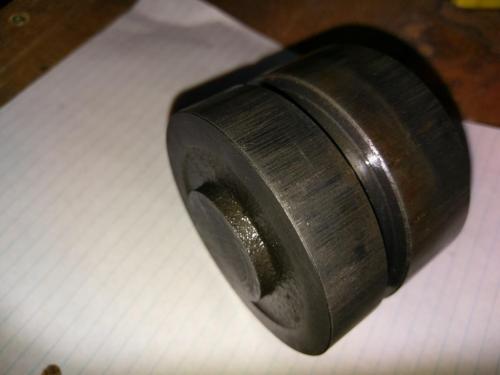
It has just the one narrow land in it that originally ran a flat rubber seal with an O-ring backup.
The more complicated part of the piston is this side
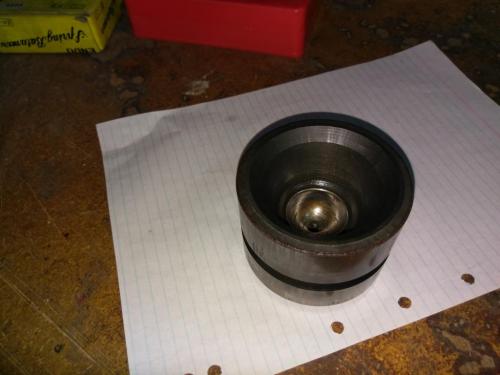
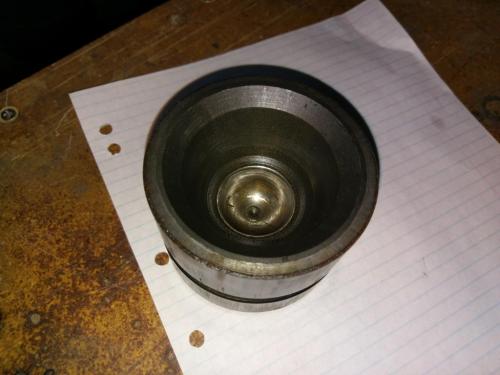
where it has a concave seat that accepts the convex end of the pushrod:
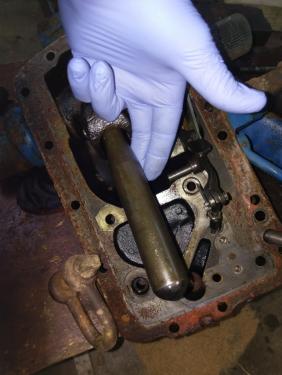
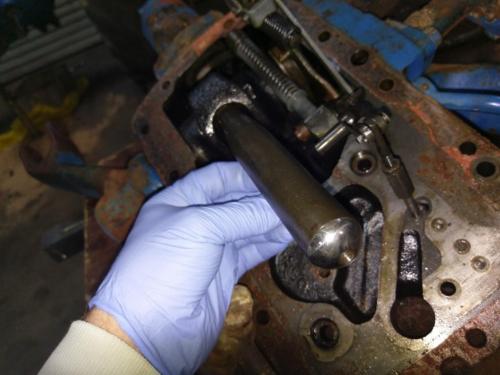
I don't think that I can replicate that concave seat. The radius is larger than my radius gauges, perhaps around 0.6" and it appears to be hardened.
I've been scratching my head over how to approach this; someone suggested sleeving the piston and cutting a land in the sleeve. another thought has been to turn the existing piston down to a small slug with the seat in it and making a new piston with a pocket to accept that slug.
I'm now wondering if there would be a type of seal that can cope with a .020" clearance between the piston and the bore? The piston is close to .040" smaller in diameter than the new bore size.
I have very little knowledge of hydraulic components so am keen to hear whatever you guys can offer.
I posted a photo the other day of the hydraulic lift cylinder out of the 3-point linkage on my old Ford 4100 tractor being rebored in the lathe. I dropped it in to an engine rebuilder today who is going to hone it to finished size and surface.
The cylinder bore seems originally to have been 3.30". I have bored it out to 85mm being the next 'standard' size up from that; this got all the scoring out and I should end up with a good-as-new 85mm cylinder, with the plan to use a modern single-acting hydraulic piston seal in that size.
That brings me to the piston. My problem is whether I need to make a new piston, put a sleeve on the existing one, or simply cut some lands in it and run wear rings.
Here's the piston. I'm pretty sure the material is cast iron:
It has just the one narrow land in it that originally ran a flat rubber seal with an O-ring backup.
The more complicated part of the piston is this side
where it has a concave seat that accepts the convex end of the pushrod:
I don't think that I can replicate that concave seat. The radius is larger than my radius gauges, perhaps around 0.6" and it appears to be hardened.
I've been scratching my head over how to approach this; someone suggested sleeving the piston and cutting a land in the sleeve. another thought has been to turn the existing piston down to a small slug with the seat in it and making a new piston with a pocket to accept that slug.
I'm now wondering if there would be a type of seal that can cope with a .020" clearance between the piston and the bore? The piston is close to .040" smaller in diameter than the new bore size.
I have very little knowledge of hydraulic components so am keen to hear whatever you guys can offer.
Lathe (n); a machine tool used in the production of milling machine components.
Milling Machine (n); a machine tool used in the production of lathe components.
Milling Machine (n); a machine tool used in the production of lathe components.





![[Image: TomsTechLogo-Profile.png]](http://tomstechniques.com/wp-content/uploads/2013/11/TomsTechLogo-Profile.png)
